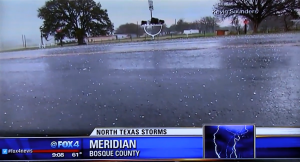
 Tornadoes, Hail, Damaging Wind, Flash Flooding
Tornadoes, Hail, Damaging Wind, Flash Flooding
Severe weather in Bosque County can happen year around and its something we all need to be prepared for. Tornadoes, Hail, Damaging Winds and Flash Flooding can happen with little warning giving you no time to prepare, it's time to act.
Bosque County is no stranger to severe weather, from hail storms to damaging winds and tornadoes we are affected by severe weather each and every year. In fact, Bosque County has had over 30 tornadoes since 1960 with the strongest being a F5 near Valley Mills.
Severe weather preparedness is more than just rain boots and an umbrella. The information below is for you to prepare and take care of yourself and family when severe weather threatens.
Severe Thunderstorm and Lightning
PREPARE
Thunderstorms can be exciting to watch, especially from the safety of your warm, comfy couch. Besides staying dry, here's another good reason to stay inside (and stay off the telephone during severe weather)—lightning kills more people each year than tornadoes. Since every thunderstorm produces lightning, you need to be prepared!
RESPOND DURING
- If you can hear thunder, you're close enough to be struck by lightning—find safe shelter immediately.
- Move to a sturdy building and stay away from the windows (don't take shelter in a shed, under isolated trees or in a convertible vehicle).
- If a sturdy shelter is not available, get inside a hardtop vehicle, keep the windows up, and do not touch metal.
- Get out of boats and away from water.
- Unplug appliances and avoid using the telephone except in an emergency.
RECOVER AFTER
- You may touch them—they don't carry an electrical charge.
- Call for help immediately. Being struck by lightning can cause burns or nervous system damage, broken bones and loss of hearing and eyesight.
- Give first aid or CPR if necessary
Flooding & Flash Floods
PREPARE
RESPOND DURING
Flash Flood Safety Tips:
- Get out of areas subject to flooding, like dips, low spots, canyons, washes, etc.
- Avoid already flooded and high-velocity flow areas—don’t attempt to cross a flowing stream.
- Never drive through flooded roadways in case the roadbed is no longer intact.
- If your vehicle stalls, leave it immediately and seek higher ground.
- Be cautious at night when it’s harder to recognize flood dangers.
- Don’t camp or park your vehicle along streams and washes, particularly during threatening conditions.
RECOVER AFTER
- Do not cross flooded roads, the roadway maybe washed out.
- Do not return home until it is safe to do.
- You may need help cleaning out mud and damaged household goods.
